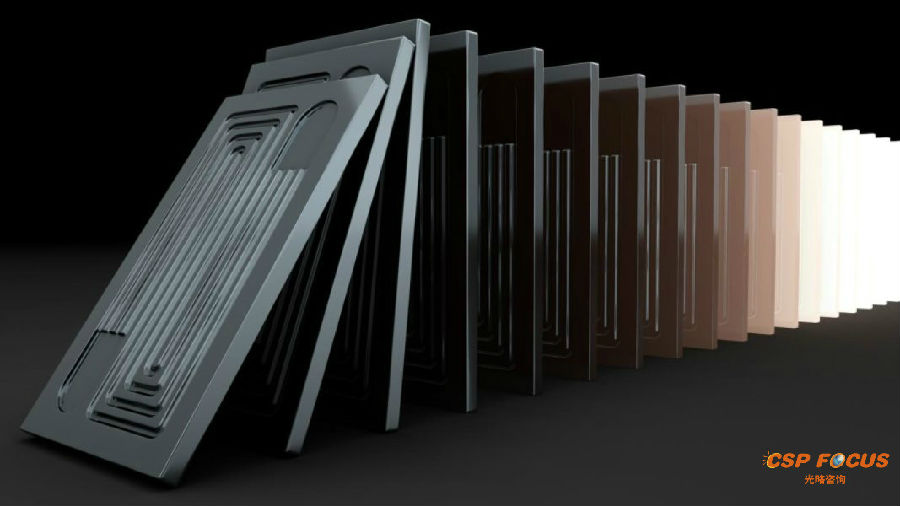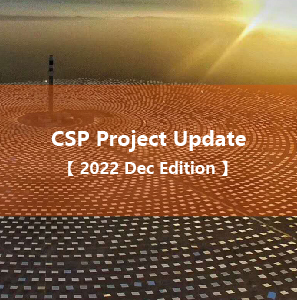Home > Market > Other Regions > Here
New material could up efficiency of concentrated solar power
2018.10.20 From: Kayla Wiles
Scientists have developed a new material and manufacturing process that would make one way to use solar power — as heat energy — more efficient in generating electricity.

A recent development would make electricity generation from the sun’s heat more efficient, by using ceramic-metal plates for heat transfer at higher temperatures and at elevated pressures.
Solar power accounts for less than 2 percent of U.S. electricity but could make up more than that if the cost of electricity generation and energy storage for use on cloudy days and at nighttime were cheaper.
A Purdue University-led team developed a new material and manufacturing process that would make one way to use solar power — as heat energy — more efficient in generating electricity.
The innovation is an important step for putting solar heat-to-electricity generation in direct cost competition with fossil fuels, which generate more than 60 percent of electricity in the U.S.
“Storing solar energy as heat can already be cheaper than storing energy via batteries, so the next step is reducing the cost of generating electricity from the sun’s heat with the added benefit of zero greenhouse gas emissions,” said Kenneth Sandhage, Purdue’s Reilly Professor of Materials Engineering.
The research, which was done at Purdue in collaboration with the Georgia Institute of Technology, the University of Wisconsin-Madison and Oak Ridge National Laboratory, published in the journal Nature.
This work aligns with Purdue’s Giant Leaps celebration, acknowledging the university’s global advancements made for a sustainable economy and planet as part of Purdue’s 150th anniversary. This is one of the four themes of the yearlong celebration’s Ideas Festival, designed to showcase Purdue as an intellectual center solving real-world issues.
Solar power doesn’t only generate electricity via panels in farms or on rooftops. Another option is concentrated power plants that run on heat energy.
Concentrated solar power plants convert solar energy into electricity by using mirrors or lenses to concentrate a lot of light onto a small area, which generates heat that is transferred to a molten salt. Heat from the molten salt is then transferred to a “working” fluid, supercritical carbon dioxide, that expands and works to spin a turbine for generating electricity.
To make solar-powered electricity cheaper, the turbine engine would need to generate even more electricity for the same amount of heat, which means the engine needs to run hotter.
The problem is that heat exchangers, which transfer heat from the hot molten salt to the working fluid, are currently made of stainless steel or nickel-based alloys that get too soft at the desired higher temperatures and at the elevated pressure of supercritical carbon dioxide.
Inspired by the materials his group had previously combined to make “composite” materials that can handle high heat and pressure for applications like solid-fuel rocket nozzles, Sandhage worked with Asegun Henry, now at the Massachusetts Institute of Technology, to conceive of a similar composite for more robust heat exchangers.
Two materials showed promise together as a composite: The ceramic zirconium carbide, and the metal tungsten.
Purdue researchers created plates of the ceramic-metal composite. The plates host customizable channels for tailoring the exchange of heat, based on simulations of the channels conducted at Georgia Tech by Devesh Ranjan’s team.
Mechanical tests by Edgar Lara-Curzio’s team at Oak Ridge National Laboratory and corrosion tests by Mark Anderson’s team at Wisconsin-Madison helped show that this new composite material could be tailored to successfully withstand the higher temperature, high-pressure supercritical carbon dioxide needed for generating electricity more efficiently than today’s heat exchangers.
An economic analysis by Georgia Tech and Purdue researchers also showed that the scaled-up manufacturing of these heat exchangers could be conducted at comparable or lower cost than for stainless steel or nickel alloy-based ones.
“Ultimately, with continued development, this technology would allow for large-scale penetration of renewable solar energy into the electricity grid,” Sandhage said. “This would mean dramatic reductions in human-made carbon dioxide emissions from electricity production.”
Relevant CSP Conference: CSP Focus Innovation 2018(Oct.25-26, Xi'an, China.)
More from CSP Focus
NextLeave your thoughts here
Reports(Member Only)
See more+-
CSP Focus Membership Proposals
We are now proposing CSP Focus Membership, hoping to better serve our members to keep pace with the latest updates of ongoing CSP projects worldwide, and to establish and maintain business relations with major shareholders of the projects. CSP Focus offers to Membership exclusive access to:1. Daily/Weekly update and analysis on CSP policies, projects, technologies, market trend and corporate relea
-
The Latest CSP Focus Monthly Update
Join CSP Focus Membership to Get the Latest CSP Focus Monthly Update December Edition.
-
CSP Project Monthly Update 2022 December Edition
CSP Focus is presenting CSP Project (China) Update 2022 December Edition.Detail report is available for CSP Focus Membership.
-
Presentations-CSP Focus China 2021
The Report is for CSP Focus Members only.
Upcoming Events
See more+-
12th CSP Focus China 2022
2022.04.21-22 Beijing
-
11th CSP Focus China 2021
2021.10.28-29 Beijing
-
10th CSP Focus China 2020
2020.10.22-23 Beijing, China
Project Updates
See more+-
Lanzhou Dacheng Dunhuang CSP Project
Asia Pacific-China,Operational,Parabolic Trough
-
Luneng Haixi 50MW Molten Salt Tower CSP Project
Asia Pacific-China,Operational,Power Tower
-
Dubai 950MW NOOR Energy 1 CSP+PV Project
MENA-UAE,Under construction,Power Tower
-
Power China Gonghe 50MW Molten Salt Tower CSP Project
Asia Pacific-China,Operational,Power Tower





